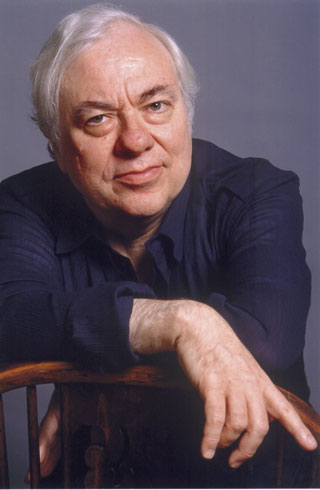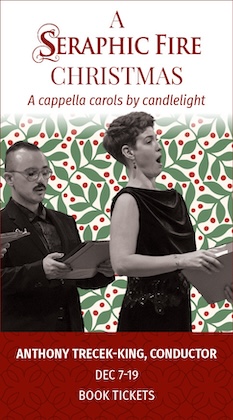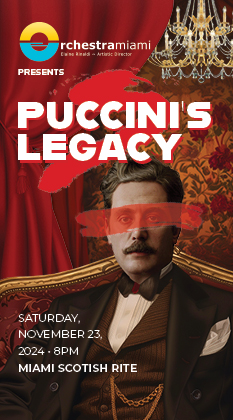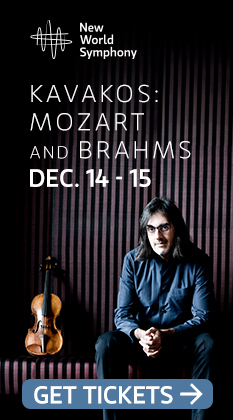Richard Goode brings insight and intimacy to Bach and Haydn in Palm Beach

From the presentation of the first half of his Palm Beach recital Wednesday night, it wasn’t hard to imagine that Richard Goode had invited the audience into his living room as the famously bookish pianist was holding forth at the keyboard, turning pages of music and happily playing everything he chanced upon.
One reason for that impression was that Goode played his first half of Bach fugues and Haydn sonatas with the scores, peering at pages and humming along, making faces and conducting with his spare hand, blissfully lost in the joy of making music. The other reason was the intimate nature of that music, which, when played on a modern piano, ends up forcing the listener to concentrate on the quality of the ideas rather than the sheer pleasure of the instrument’s sound.
Fortunately for those audience members at the Society of the Four Arts who were looking for something more traditionally pianistic, Goode devoted his second half to a powerful, drama-filled reading of Schumann’s Kreisleriana, one that showed how important it is for this rapidly shifting music to be handled by a master pianist who can tie all those disparate ideas together and give them meaning.
Goode remains one of the country’s best exemplars of the Germanic core repertory, and he opened (as he did in last year’s appearance at the Kravis Center) with J.S. Bach: a pair of consecutive preludes and fugues from Book II of The Well-Tempered Clavier. As he indicated in his program notes, the No. 14 (in F-sharp minor, BWV 883) and No. 15 (in G, BWV 884) sets make for excellent contrast when performed together.
His F-sharp minor prelude was slow and somber, but noble and straightforward as well, and there was a lovely emphasis on the brief hint of G major toward the end, like the sun breaking through a slate-colored sky. The fugue continued in much the atmosphere of cool solemnity, with Goode building the slowly rolling sixteenth notes that enter halfway through the fugue to a grinding, forceful climax in the final bars.
The No. 15 pair was lightness itself, the prelude very fast and hushed, bubbling and glimmering, and that spirit was carried over into its companion. In addition to swiftness, the fugue had a special kind of sparkle in the way Goode played the little two-note offbeat answer to the subject, a taste of Bachian swing that kept things moving along to a playful conclusion.
Few other composers are as associated with the idea of wit and playfulness as Franz Joseph Haydn, and Goode followed the Bach with three of the Austrian composer’s shorter piano sonatas: No. 21 in C, No. 20 in C minor, and No. 40 in G (Hob. XVI/21, 20 and 40). It’s usually only serious pianists who get to discover the greatness of these works, and it’s rare to hear anything but the latest, most Romantic of the Haydn sonatas in recital.
But these earlier pieces are like Haydn’s musical postcards: They reflect the current musical trends over the various decades of his career, and they offer our best insight into the fertility of his invention. The first two sonatas, which date from 1773 and 1771 respectively, have a good deal of ornamentation, and in both cases, Goode tore into each turn, trill and mordent with relish.
In the C major sonata, the pianist added some nice coloring with a sudden drop in volume as the key switched to the minor, and he treated the repeated-chord part of the theme with an insistent, impatient kind of attack. The slow movement’s first climax was massive, almost too much so, but it made the quiet tenderness of the middle section more effective, and the good humor of the finale was hard to resist.
Goode was even more at home in the C minor sonata, particularly in the inspired middle section of the first movement, with its key-shifting triplets in the left hand, and in the long-limbed melodic lines of the second movement. In that Andante con moto movement, he managed to convey a sense of an unbroken line all the way through the movement, and the piece sounded more forward-looking because of it.
Bumptious wit was the order of the day for the two-movement G major sonata, which Goode played with a strong folk flavor for the opening theme. Goode gave the smirking Presto every chance it could get to make a joke, and the audience responded by audibly chuckling at the cartoony back-and-forth of the sonata’s closing pages.
The second half of the concert was devoted to Kreisleriana, and Goode played no encore despite taking two curtain calls after the end of the evening. For this important early work by Schumann (Op. 16), Goode dispensed with the scores (and his glasses), and gave himself wholly over to the ebb and flow of the piece.
It’s a tough piece to unify, with constant changes of mood and tempo. But Goode is well-suited for it, and he showed that by bringing a distinct style, tempo and articulation to each section. Among the high points were the second section, in which the main theme’s suavity and warmth were markedly different than the quiet dignity of the second intermezzo; the heartfelt introspection of the fourth section; the effective, tension-building way Goode tackled the five-note motifs in the fifth section.
And after the frenzied, passionate outburst of the seventh section, Goode concluded this Kreisleriana with a surpassingly soft and spooky eighth section, in which perhaps only the final appearance of the theme could have been even quieter than it was. This was a beautiful reading of this difficult work, and it seized the attention of its listeners: Halfway through the piece, the silence in the room made it clear that the audience was paying full attention to the pianist on the stage.
Give this work too little contrast, and it sounds clumsy, too much, and it sounds perverse. Again, it takes a special artist, one who identifies in some fundamental way with the mind of the composer, to make Kreisleriana work, and Richard Goode is just such a pianist.
Greg Stepanich is the founder of Palm Beach ArtsPaper (www.palmbeachartspaper.com). He also writes for The Miami Herald and The Palm Beach Daily News. Before starting ArtsPaper, he worked as a reporter and editor at papers in Illinois, West Virginia and Florida.
Posted in Performances
Leave a Comment
Thu Jan 14, 2010
at 11:23 am
No Comments


